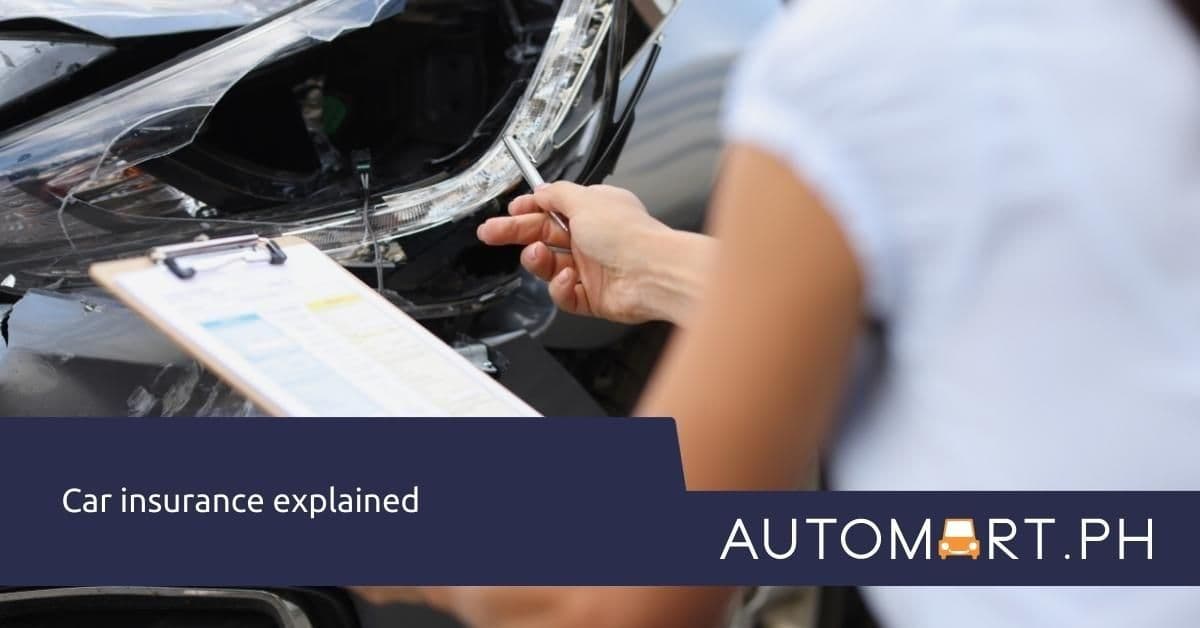
Car Insurance Explained
Updated on December 19 2025
Getting a car insurance policy should be on every car owner’s mind. Accidents on the road can happen at any time. Chances are you could incur expenses like repairs to your vehicle and the other driver’s vehicle. Worst if you, your passengers, and the other driver’s passengers get injured, they may require you to pay for the medical expenses, especially if you were the one at fault.
Accident-related expenses can be costly when done out of the pocket. The costs can pile up when the hospital bills and medical expenses are factored in. Getting car insurance can free you from making out-of-pocket payments and leave you with financial problems in the event of an accident.
Given a wide range of insurance companies to choose from, understanding your coverage options is important when purchasing a new car or shopping around for a policy. Some insurance premium protects you, your passengers, and your vehicle while others shoulder your injuries or damages to the other driver.
Components of an Insurance Policy
Before you go about searching for an insurance policy, you first need to understand the components of your insurance policy:
- Premium. This refers to the amount you pay for your coverage with payments scheduled monthly, quarterly, semi-annually, or annually depending on the insurance company.
- Deductible. This is the amount you pay out-of-pocket before your insurance provider pays the remaining cost. Deductibles are applicable in each claim. The higher the rates, the lower will be the deductible.
- Coverage Amount. This is the amount you will pay per accident or claim.
- Claim Filing. These are the directions on how to file a claim
Common Types of Car Insurance
Depending on where you live, some car insurance can be mandatory while others will be optional. You need to be aware of the laws in your city to help you make an informed decision/ Here are the most common types of car insurance, classified as mandatory or optional.
Mandatory Coverage
These types of insurance policies are mandatory requirements offered by most insurance companies.
Liability Coverage. Liability coverage covers bodily injuries and property damage. The former will cover costs associated with injuries and death that you or the other driver caused, regardless of who is at fault. The latter, on the other hand, covers damages to properties such as an office, building, or utility pole.
Personal Injury Protection. Personal injury protection or PIP will cover medical expenses for any injuries to you or your passengers. It will also reimburse any lost wages and other related expenses.
Uninsured Motorist/Underinsured Motorist Coverage. Uninsured motorist insurance pays for the accident if it is caused by an uninsured motorist while underinsured motorist coverage will reimburse the cost incurred by another driver without sufficient insurance coverage.
Optional Coverage
While liability coverage, PIP, and uninsured/underinsured motorist coverage are legally required coverage, they do not cover damage to your own vehicle. However, these optional coverages will do just that:
Collision Coverage. With this insurance policy, the provider will cover the costs for damage to your car as a result of a collision with another vehicle or object when you are at fault. Collision coverage will not cover mechanical failure or wear-and-tear on your car. However, it will cover damage from potholes or from rolling your car.
Comprehensive Coverage. Often bundled with collision coverage, comprehensive coverage has its own distinct features. It does not cover any accident-related damage to your vehicle but does shoulder damage caused by natural disasters like hail, earthquake, fire, and flood. In addition, comprehensive coverage will pay for damage caused by animal contact or if your vehicle was stolen or vandalized.
Factors That Can Affect Your Car Insurance
The amount of your insurance premium will depend on several factors.
Driving record. The better or clean your record is, the lower will be your premium rates. Conversely, having more accidents or serious traffic violations will likely increase your insurance premium rate. The higher car insurance premium will also apply to a new driver without an insurance track record.
Location. If you live in a place where there is a high rate of vandalism, theft, and accidents, you can expect to pay a higher auto insurance premium compared to those in small towns or rural areas. If you park your car on a street or it has anti-theft features, it may impact your premium rate as well.
Age. In general, the mature more the driver is, the less prone they are to accidents. Teenagers or younger people will have higher insurance premiums because of their higher risk to get involved in accidents.
Gender. Statistics reveal that women tend to be less prone to accidents, have fewer DUI incidence, and have fewer serious accidents compared to their male counterparts.
Type of Car. The cost of your car can have a major impact on the determination of insurance premiums. Other factors like the likelihood of theft, cost of repairs, engine size, and safety record of your car may also come into play.
Having car insurance can give you assurance that your provider will have your back during accidents. It takes a little research in order to find the right car insurance for you. So if you want or need to know more about insurance, we at Automart.PH and Assurance.PH are at your service.